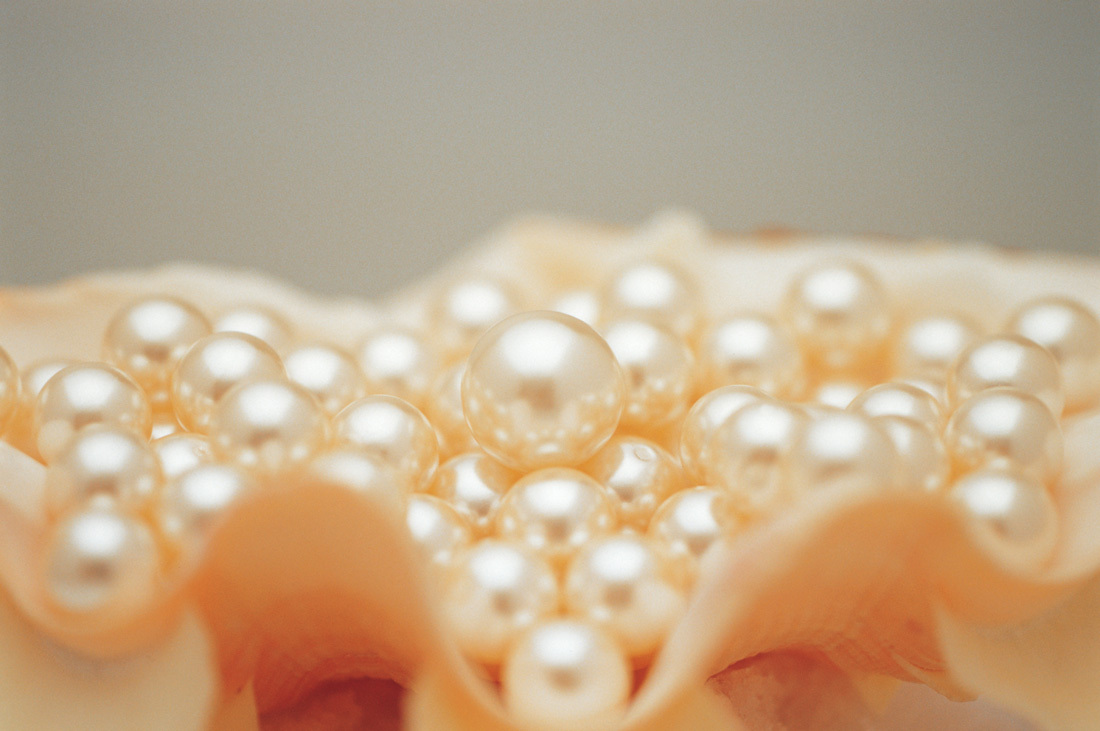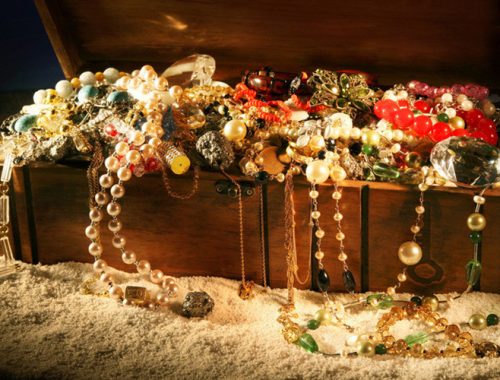The guide includes:
Different types of jewelry
How to find Chinese jewelry suppliers
Where can you find Chinese jewelry manufacturers?
Product certification and testing
Jewelry packaging
Shipping fee
1. Different types of jewelry

Jewelry has been an integral part of human culture for centuries, serving as a symbol of wealth, status, and personal expression. It comes in a vast array of styles, designs, and materials, each carrying its own unique allure and significance. In this article, we will delve into the enchanting world of jewelry and explore the different types available, from classic gemstone adornments to contemporary art-inspired creations.
I. Traditional Gemstone Jewelry
A. Diamonds:
1. The 4Cs: cut, color, clarity, and carat weight.
2. Popular diamond jewelry pieces: engagement rings, necklaces, earrings.
3. Historical significance: The Hope Diamond, the Cullinan Diamond.
B. Emeralds:
1. Lore and symbolism.
2. Famous emerald jewelry: Elizabeth Taylor’s emerald and diamond necklace.
3. Types of cuts: cushion, princess, oval.
C. Rubies:
1. Cultural significance: associated with passion and protection.
2. Famous ruby pieces: “The Sunrise Ruby,” “The Rosser Reeves Star Ruby.”
3. Different shades and origins.
II. Precious Metal Jewelry
A. Gold:
1. Karat levels and purity.
2. Yellow, white, and rose gold variations.
3. Gold jewelry styles: rings, bracelets, chains.
B. Silver:
1. Versatility and affordability.
2. Sterling silver vs. pure silver.
3. Popular silver jewelry: earrings, pendants, cuffs.
C. Platinum:
1. Rarity and durability.
2. Platinum jewelry characteristics: weight, hypoallergenic.
3. Trends in platinum jewelry.
III. Fashion Jewelry
A. Costume Jewelry:
1. Affordable and fashionable.
2. Materials used: beads, glass, plastic.
3. Origins and growth in popularity.
B. Statement Jewelry:
1. Bold and unique pieces.
2. Emphasizing personal style.
3. Examples: oversized necklaces, cocktail rings.
C. Art Jewelry:
1. Blurring the line between wearable art and traditional jewelry.
2. Contemporary jewelry artists: Alexander Calder, Salvador Dali.
3. Innovative materials and techniques used.
IV. Ethnic and Cultural Jewelry
A. Indian Jewelry:
1. Intricate designs and vibrant gemstones.
2. Significance in weddings and religious ceremonies.
3. Traditional Indian jewelry pieces: Kundan, Jadau.
B. Native American Jewelry:
1. Symbolism and craftsmanship.
2. Traditional materials: turquoise, silver.
3. Famous Native American jewelry artists: Charles Loloma, Allan Houser.
C. African Jewelry:
1. Cultural representation and spiritual beliefs.
2. Materials used: beads, shells, metals.
3. Regional variations and styles.
V. Fine Jewelry
A. Haute Joaillerie:
1. Exquisite craftsmanship and meticulous detail.
2. Fine jewelry houses: Cartier, Van Cleef & Arpels.
3. Highlighting rare and precious gemstones.
B. Bespoke Jewelry:
1. Custom-made to suit individual preferences.
2. Collaborations with artisans and designers.
3. Unique stories behind bespoke jewelry pieces.
C. Heirloom Jewelry:
1. Sentimental value and family legacies.
2. Passed down through generations.
3. Restoring and repurposing heirloom pieces.
Jewelry holds a special place in our hearts and history, offering endless possibilities for self-expression and celebration. From traditional gemstone and precious metal jewelry to fashion-forward pieces and culturally significant designs, each category adds its own allure to the vast world of adornments. Discovering the different types of jewelry allows us to appreciate the artistry, craftsmanship, and personal stories behind these enchanting treasures.
2. How to find Chinese jewelry suppliers
Finding Chinese jewelry suppliers on the internet is easy. However, you can also choose to visit China and explore your options. Most importers initially choose to find jewelry suppliers on the internet because their business is small and the expenses incurred by the trip to China can be used to purchase inventory.
However, if you go directly to China to find a jewelry supplier, you can check the products yourself and choose the style and quality you want. It is up to you to decide the best way to find the jewelry that suits your requirements and business.

2.1. Where can you find Chinese jewelry wholesale suppliers
Guangzhou market
We recently helped our customers buy jewelry from the Guangzhou wholesale market. The jewelry suppliers are located in the Panyu wholesale market in southern Guangzhou.
The minimum order quantity of Panyu jewelry suppliers is relatively high, usually around 600-1000 pieces. So, if you want to buy a lot of jewelry, I highly recommend you go to the Panyu market.
There are many price levels of jewelry depending on the material, style, and quality you choose. If you plan to customize your jewelry by adding a logo or printing pictures on a jewelry frame, the suppliers in the Guangzhou market can meet your needs. Usually, if you want to add a monochrome logo, the price of the jewelry will increase by $0.03 each, and for the frame, you must pay $0.07 each.
The jewelry in the Guangzhou wholesale market is mainly used for export, with a wide variety of fashionable styles available.

Zhejiang market
There are many jewelry wholesale markets in Zhejiang, such as the Zhuji Pearl Market. However, the jewelry wholesale market in Zhejiang is different from the Guangzhou market.
The minimum order quantity for jewelry suppliers in the Zhejiang Zhuji Pearl Market is generally small and they accept even small orders, as low as 10-30 pieces. At the same time, the price of jewelry is lower compared to the Guangzhou market for wholesale jewelry from China.
If you are buying clothing or electronics in the Guangzhou market (here is a guide to importing electronic products from China), then I suggest you explore the jewelry market in Guangzhou. In addition, if you have a small order, then Zhejiang is the best choice for you because the minimum order quantity is lower. You can explore some retail and wholesale markets such as the Guangzhou Market and Zhuji Pearl Market.
If you are concerned about the quality of the jewelry in these markets, it will depend entirely on the level of jewelry you want and where your manufacturer comes from. Generally, the average quality of jewelry varies depending on the area in which it is manufactured. We will discuss this topic in detail in the next chapter.
Online Markets
You can travel to Alibaba, DHgate, westsourcing.com, or hopesourcing.com to find reliable jewelry suppliers. However, most of the suppliers on these platforms are not manufacturers or factories. Usually, their order quantities are very low, but their prices are higher as a result. Additionally, they may not be able to meet your customization requirements.
Finding Chinese jewelry manufacturers online can be difficult because these manufacturers are often not skilled in online marketing. Instead, they primarily sell their products through trading companies. If you are planning a larger order and the supplier on the aforementioned websites does not meet your requirements, the best approach is to find an agent who can connect you directly with the manufacturer and facilitate the purchase according to your specifications. Purchasing agents can quickly assist you in finding several excellent factories in China that align with your needs.
Jewelry exhibition
In addition to visiting China’s wholesale markets and online search providers, you can also go to the China Expo to find reliable wholesale jewelry suppliers. I have listed some Chinese jewelry exhibitions below for your reference:
Canton Fair, stage
Address: No. 382, Yuejiang Middle Road, Haizhu District, Guangzhou
Guangzhou International Jewelry Show
Address: Guangzhou Poly World Trade Expo Center (Caizhou Station C / D Exit)
If you plan to import jewelry from China, any of the above three methods of finding a supplier will definitely help you. However, if you are coming to China for the first time or are unfamiliar with the Chinese wholesale market, I strongly recommend that you find a reliable purchasing agent to take you to the wholesale market or jewelry exhibition to find suppliers.
(You can read more about how the purchasing agent can help you here.)
2.2 Where can you find Chinese jewelry manufacturers in China?
When buying jewelry from China, it is important to pay attention to the location of the manufacturer you are dealing with. The quality and price of the jewelry can vary greatly depending on the manufacturer’s location.
Chinese jewelry factories are mainly concentrated in Guangzhou, Shenzhen, and Zhuji. Guangzhou Panyu, Guangzhou Hualin, Guangzhou Liwan, and Shenzhen Shuibei have wholesale markets for gold jewelry, and larger factories often have showroom counters at these wholesale bases. Therefore, I suggest finding a jewelry supplier in these places. It is also beneficial to bring a purchasing agent or a Chinese translator to facilitate communication and negotiation with the supplier.
Guangzhou Panyu
Panyu is one of the largest jewelry manufacturing plants, with most jewelry manufacturers situated in Shiqiao Town. Here, the majority of factories focus on producing jewelry. However, in Shenzhen, you may also find some jewelry manufacturers. Nonetheless, these manufacturers are not yet very professional as they have only recently entered the industry.
In Guangzhou, more jewelry manufacturers specialize in producing metal and gemstone jewelry. Therefore, if you are mainly interested in purchasing metal and gemstone jewelry, you can find a jewelry factory in Guangzhou. The price of jewelry here will be lower, and the quality will be better compared to Zhejiang jewelry.
Around 70% to 80% of the jewelry produced in Guangzhou is exported to countries worldwide. Therefore, the quality of the jewelry manufactured here meets the demands of most importing countries. However, if you are looking for low-end jewelry, we recommend exploring Zhejiang.

Shenzhen Shuibei
The jewelry industry in Shenzhen is mainly concentrated in Shenzhen Shuibei. There are 4-6 large factories with hundreds of employees, as well as more than a dozen factories with about 1,000 employees. Most of these factories are small to medium-sized, employing around 50-100 people. Many jewelry companies from Hong Kong or other countries also have their processing done in large factories in Shenzhen.
Shenzhen primarily produces high-end metal jewelry, with only a small portion being gemstone jewelry. However, in comparison to manufacturers in other locations, Shenzhen jewelry is more expensive. If quality is your top priority and you require customization, then Shenzhen is the ideal choice for wholesale jewelry from China.
Please note that Shenzhen is a good option for large purchases. However, if you only plan to buy a small amount of jewelry, it is best to go to Guangzhou.
Zhuji, Zhejiang
Zhejiang Zhuji is one of the largest jewelry manufacturers in China, mainly specializing in pearl production. While there are numerous conventional jewelry factories in Zhejiang, the majority of them are privately owned small factories. These smaller establishments primarily focus on producing pearl jewelry rather than metal jewelry.
The price of jewelry produced in Zhejiang is comparatively low. However, unlike Guangzhou, Zhejiang’s primary focus is not on jewelry production. As a result, the quality of jewelry from Zhejiang may not exceed that from Guangzhou. In terms of price, jewelry in Guangzhou tends to be higher priced than in Zhejiang. Our research indicates that a significant portion of pearl jewelry in the European and American markets is sourced from Zhejiang.
Therefore, if you are looking to purchase a substantial amount of jewelry or specifically seeking pearl jewelry, it is recommended to consider a jewelry manufacturer in Zhejiang.

3. Product certification and testing

Based on my experience, it is advisable to enlist the help of a freight forwarder or a Chinese purchasing agent based in your country to assist you in complying with regulations. These professionals will be knowledgeable about the specific certificates required for your product to be shipped and cleared. They will also provide assistance with any customs clearance and transportation-related issues you may encounter.
4. Jewelry packaging
Packaging is an important aspect of every product purchase, especially if the product is as fragile as glass. However, many jewelry manufacturers do not offer separate packaging. So, if you want a different jewelry package, you will have to look for a packaging supplier.
There are two types of jewelry packaging: jewelry boxes and jewelry bags. Common jewelry boxes are made of plastic, paper, metal, leather, or EVA. Jewelry bags are mainly made of cloth or leather.
The price of jewelry boxes and jewelry bags varies greatly depending on the material.
5. Jewelry shipping costs
The packaging of finished jewelry in the factory is generally as follows: 1 piece per opp bag; 20 bags per box; 25 boxes (500 pieces) per carton. The size of boxes and cartons may vary from factory to factory. Some factories offer 600 pieces per carton, while others offer 400 pieces per carton. For a better explanation, let’s take the example of a customer who helped buy jewelry.
Jewelry packaging:
Typically, 500 pieces of jewelry weigh about 10 kg and have a volume of about 0.05 CBM. Table 1 below can help you calculate the cost of shipping jewelry to different countries by courier. Table 2 will provide you with prices for transporting LCL (less than container load).
Table 1: Courier costs
US Western Europe Central Europe Africa South America Middle East
Express price (USD / kg) $5.4 $7.8 $7.8 $21.5 $17.3 $6.9
Express price (USD / unit) $0.17 $0.25 $0.25 $0.69 $0.55 $0.22
Table 2: Transport LCL prices
United States Europe South America Africa South Asia
Shipping fee (USD / CBM) $250-$330 $300-$350 $300-$400 $300-$400 $100-$200
Shipping fee (USD / unit) $0.04-$0.05 $0.048-$0.056 $0.048-$0.064 $0.048-$0.064 $0.016-$0.032
Now you can start!
I hope this comprehensive guide will help you easily import jewelry from China.
If you have any questions or concerns after reading this article, please leave a comment and let me know your question. I will try my best to answer all your questions and solve your problems.





